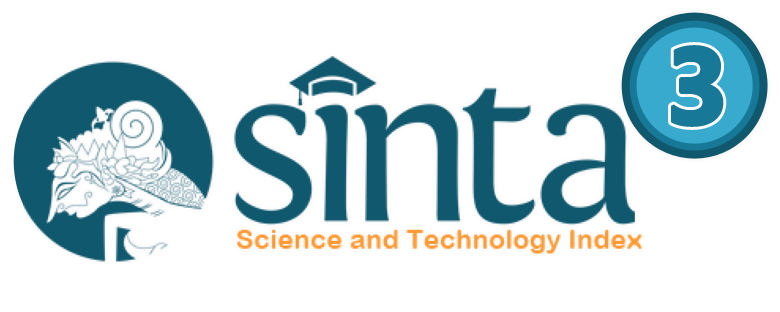Strengthening Effect of Rupiah Exchange Rate Through Financing Dimension on Profitability in Islamic Commercial Banks in Indonesia
DOI:
https://doi.org/10.35838/jrap.2025.001Keywords:
Exchange Rate, Islamic Bank Health, ROA, NPF, FDRAbstract
Purpose: This study analyzes the impact of exchange rates on the financial health of Islamic Commercial Banks (BUS) in Indonesia, focusing on the financing dimension.
Methodology: The study employs the Moderated Regression Analysis (MRA) method to assess the interaction between exchange rates (independent variable), NPF and FDR (moderator variables), and ROA (dependent variable). It uses secondary data from the financial statements of eight Islamic Commercial Banks from 2020 to 2022, comprising 36 observations.
Finding: The results indicate that exchange rates significantly impact ROA, both directly and through interactions with NPF and FDR. The model has an adjusted R² of 34.89% and an RMSE of 1.1573, demonstrating good quality. The F-test value is 5.69 with a probability of 0.0015 (<0.05). The regression assumptions confirm normality and homoscedasticity; however, the Durbin-Watson test (1.48 < 1.80) indicates autocorrelation.
Implication: This study recommends strengthening risk management in Islamic banks through Sharia-based financing principles. It uniquely contributes to Islamic banking research by exploring exchange rate effects using a three-way interaction approach.
Originality: This study provides a unique contribution in analyzing the effect of exchange rates on the health of Islamic banks through a three-way interaction approach, which has not been widely discussed in the context of Islamic banking in Indonesia.
Downloads
References
Daubechies, I., Han, B., Ron, A., & Shen, Z. (2003). Framelets: MRA-based constructions of wavelet frames. Applied and Computational Harmonic Analysis, 14(1), 1–46. https://doi.org/10.1016/S1063-5203(02)00511-0
Firdaus, M. faza, & Hosen, M. N. (2014). Efisiensi Bank Umum Syariah Menggunakan Pendekatan Two-Stage Data Envelopment Analysis. Buletin Ekonomi Moneter Dan Perbankan, 16(2), 167–188. https://doi.org/10.21098/bemp.v16i2.31
Giannini, N. G. (2013). Faktor Yang Mempengaruhi Pembiyaan Mudharabah Pada Bank Umum Syariah Di Indonesia. Accounting Analysis Journal, 1(2), 96–103. http://journal.unnes.ac.id/sju/index.php/aaj
Kumalasari, Y., & Syaichu, M. (2016). Analisis Faktor-Faktor Yang Mempengaruhi Profitabiltas Pada Bank Umum Syariah Di Indonesia Periode 2010-2014. DIPONEGORO JOURNAL OF MANAGEMENT, 5, 1–11. http://ejournal-s1.undip.ac.id/index.php/dbr
Liana, L. (2009). Penggunaan MRA degan SPSS untuk menguji Pengaruh Variabel Moderating terhadap Hubungan antara Variabel Independen dan Varioabel Dependen. Jurnal Teknologi Informasi DINAMIK, XIV(2), 91–97.
Mankiw, G. N. (2013). Macroeconomics (Eight Edition, Ed.). Worth Publishers, Harvard University. https://www.ptonline.com/articles/how-to-get-better-mfi-results
Puteh, A., Rasyidin, M., & Mawaddah, N. (2017). Islamic banks in indonesia: Analysis of efficiency. Emerald Reach Proceedings Series, 1, 331–336. https://doi.org/10.1108/978-1-78756-793-1-00062
Putri, O. A., & Putri, N. A. R. (2023). The Effect of Inflation, Exchange Rate, Implementation of Good Corporate Governance (GCG), and Financing to Deposit Ratio (FDR) on Sharia Commercial Bank Financing Risks In Indonesia 2019-2022. Journal of Economics and Business Research, 2(2), 238–250. https://ejournal.uinsaid.ac.id/index.php/juebir
Riyadi, S., Iqbal, M., Pangastuti, A. A., & Muditomo, A. (2021). Optimization of Profit-Sharing Financing at Islamic Banking in Indonesia. Jurnal Keuangan Dan Perbankan, 25(2). https://doi.org/10.26905/jkdp.v25i2.5212
Sai, N. R. V, & Sultana, T. S. (2013). Financial Performance Analysis In Banking Sector-A Pre & Post Merger Perspective. Abhinav International Monthly Refereed Journal of Research In Management & Technology, 56. www.abhinavjournal.com
Saoqi, A. A. Y. (2017). Analyzing the Performance of Islamic Banking in Indonesia and Malaysia: Maqasid Index Approach. Jurnal Ekonomi Islam, 8(1). http://journal.uhamka.ac.id/index.php/jeihttp://journal.uhamka.ac.id/index.php/jei
Solihin, A., & Mukarromah, O. (2022). Pengaruh Inflasi Dan Kurs Nilai Tukar Terhadap Profitabilitas Bank Umum Syariah. Journal Manajemen Dan Bisnis, 5(1), 2022. https://jurnal.uts.ac.id/index.php/jmb/index.id
Sugari, B. P., Sunarko, B., & Giyatno, Y. (2018). Analisis Perbandingan Tingkat Kesehatan Bank Syariah Dan Konvensional Dengan Menggunakan Metode Rgec (Risk Profile, Good Corporate Governance, Earnings, Dan Capital). ThJP Fakultas Ekonomi dan Bisnis Unsoed (Universitas Jenderal Soedirman, Journal & Proceeding). https://core.ac.uk/outputs/267947546/?utm_source=pdf&utm_medium=banner&utm_campaign=pdf-decoration-v1
Sumilir, K. A. (2019). Banking Performance Analysis. International Journal of Multicultural and Multireligius Understanding, 6(3), 34–48. http://ijmmu.com
Sunardi, N. (2018). Analisis Risk Based Bank Rating (Rbbr) Untuk Mengukur Tingkat Kesehatan Bank Syariah Di Indonesia. JIMF (Jurnal Ilmiah Manajemen FORKAMMA, 1(2), 50–66.
Suwarno, R. C., & Muthohar, M. A. (2018). Analisis Pengaruh NPF, FDR, BOPO, CAR, dan GCG terhadap Kinerja Keuangan Bank Umum Syariah di Indonesia Periode 2013-2017. Jurnal Bisnis dan Manajemen, 6(1), 94–117. www.ojk.go.id,
Yusuf, M., & Ichsan, R. N. (2021). Analysis of Banking Performance in The Aftermath of The Merger of Bank Syariah Indonesia in Covid 19. International Journal of Science Technology & Management. http://ijstm.inarah.co.id
Downloads
Published
Issue
Section
License
Authors who publish with this journal agree to the following terms:
- Authors retain copyright and grant the journal right of first publication with the work simultaneously licensed under a Creative Commons Attribution-ShareAlike 4.0 International License that allows others to share the work with an acknowledgement of the works authorship and initial publication in this journal.
- Authors are able to enter into separate, additional contractual arrangements for the non-exclusive distribution of the journals published version of the work (e.g., post it to an institutional repository or publish it in a book), with an acknowledgement of its initial publication in this journal.
- Authors are permitted and encouraged to post their work online (e.g., in institutional repositories or on their website) prior to and during the submission process, as it can lead to productive exchanges, as well as earlier and greater citation of published work (See The Effect of Open Access).













